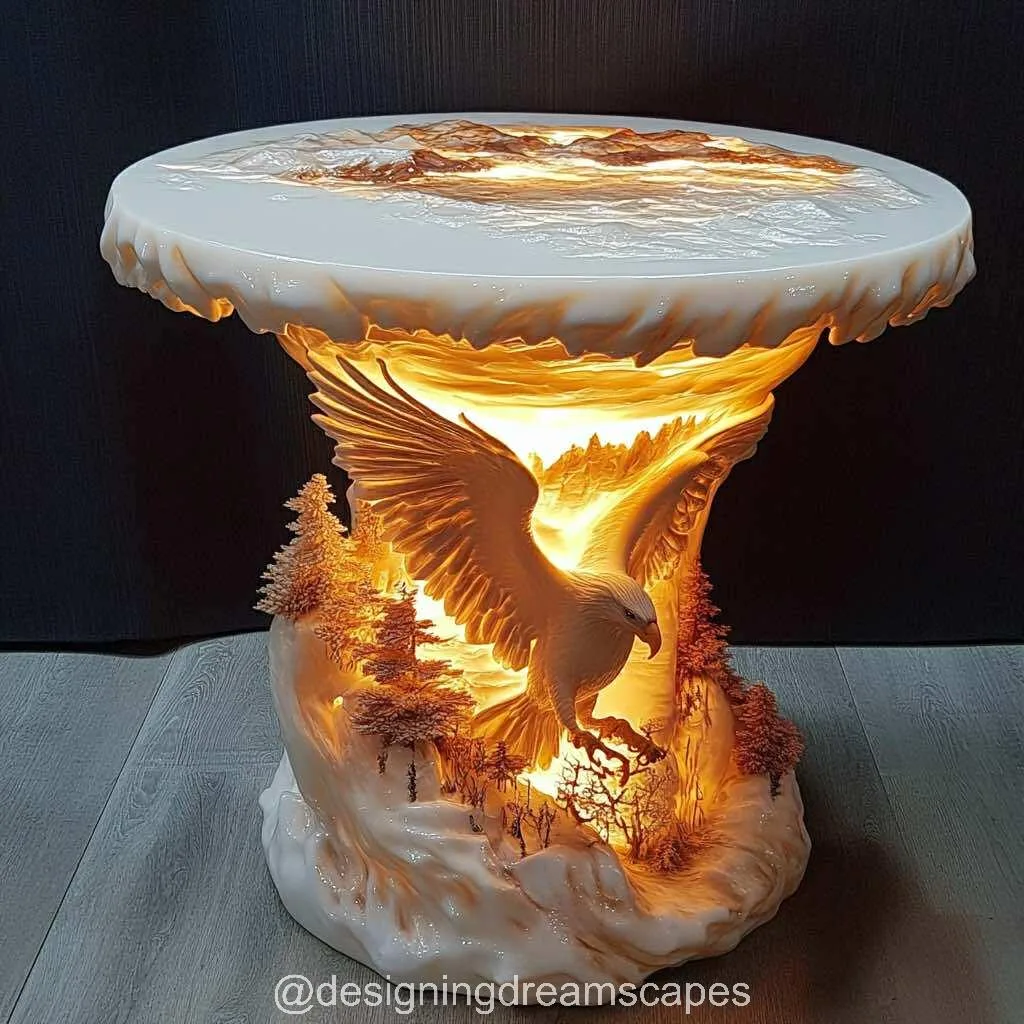Modern building design has revolutionized the way we construct and experience our built environment. With its emphasis on clean lines, simplicity, and functionality, modern architecture stands in stark contrast to the ornate and intricate styles of the past. This architectural movement emerged in the late 19th and early 20th centuries, challenging traditional notions of design.
Gone are the days of elaborate embellishments and unnecessary frills. Modern building design focuses on efficiency and practicality, utilizing new building materials and innovative engineering techniques. From skyscrapers to residential houses, modern buildings are characterized by their sleek aesthetics and thoughtful floor plans.

We’ll delve into how these structures have transformed cities around the world, offering a fresh perspective on urban living. Join us as we uncover the beauty and functionality that lies at the heart of modern architecture.
Contents
- 1 Understanding Modern Architecture
- 2 The Elimination of Ornaments: A Prominent Theme in Modern Building Design
- 3 The Evolution of Modern Architecture
- 4 Distinguishing Modern and Contemporary Architecture
- 5 Key Ideologies in Modern Architectural Design
- 6 Iconic Examples Shaping the Architectural Landscape
- 7 Modern Architecture’s Impact on Daily Living
- 8 Current Trends in Modern Architectural Design
- 9 The Intersection of Color and Modernist Aesthetics
- 10 Celebrating Influential Movements in Modern Architecture
- 11 Conclusion on the Significance of Modern Building Design
Understanding Modern Architecture
Modern architecture is a broad term that encompasses various styles, including Bauhaus, International Style, and Brutalism. It emphasizes the use of new materials and construction techniques while prioritizing functionality over ornamentation.
Various Styles of Modern Architecture
Modern architecture is not limited to a single style but rather encompasses several distinct styles. One such style is Bauhaus, which emerged in Germany in the early 20th century. Bauhaus architects focused on simplicity, clean lines, and the integration of art with technology.
Another prominent style within modern architecture is the International Style. Developed in the 1920s and 1930s, this style emphasized functionalism, efficiency, and the use of industrial materials such as glass and steel. Buildings designed in the International Style often feature flat roofs, large windows, and an absence of decorative elements.
Brutalism is yet another influential style within modern architecture. This style gained popularity in the mid-20th century and is characterized by its use of raw concrete as a primary material. Brutalist buildings often have bold geometric shapes and exhibit a sense of massiveness.

Emphasis on New Materials and Construction Techniques
One key aspect of modern architecture is its emphasis on utilizing new materials and construction techniques. Architects sought to break away from traditional building methods by exploring innovative options that allowed for greater flexibility in design.
For example, advancements in steel production enabled architects to create structures with larger spans and reduced reliance on load-bearing walls. This led to open floor plans and increased opportunities for creative expression in architectural design.
The development of reinforced concrete provided architects with more freedom to experiment with different forms and shapes. The ability to mold concrete into complex geometries allowed for unique architectural expressions that were not previously possible.
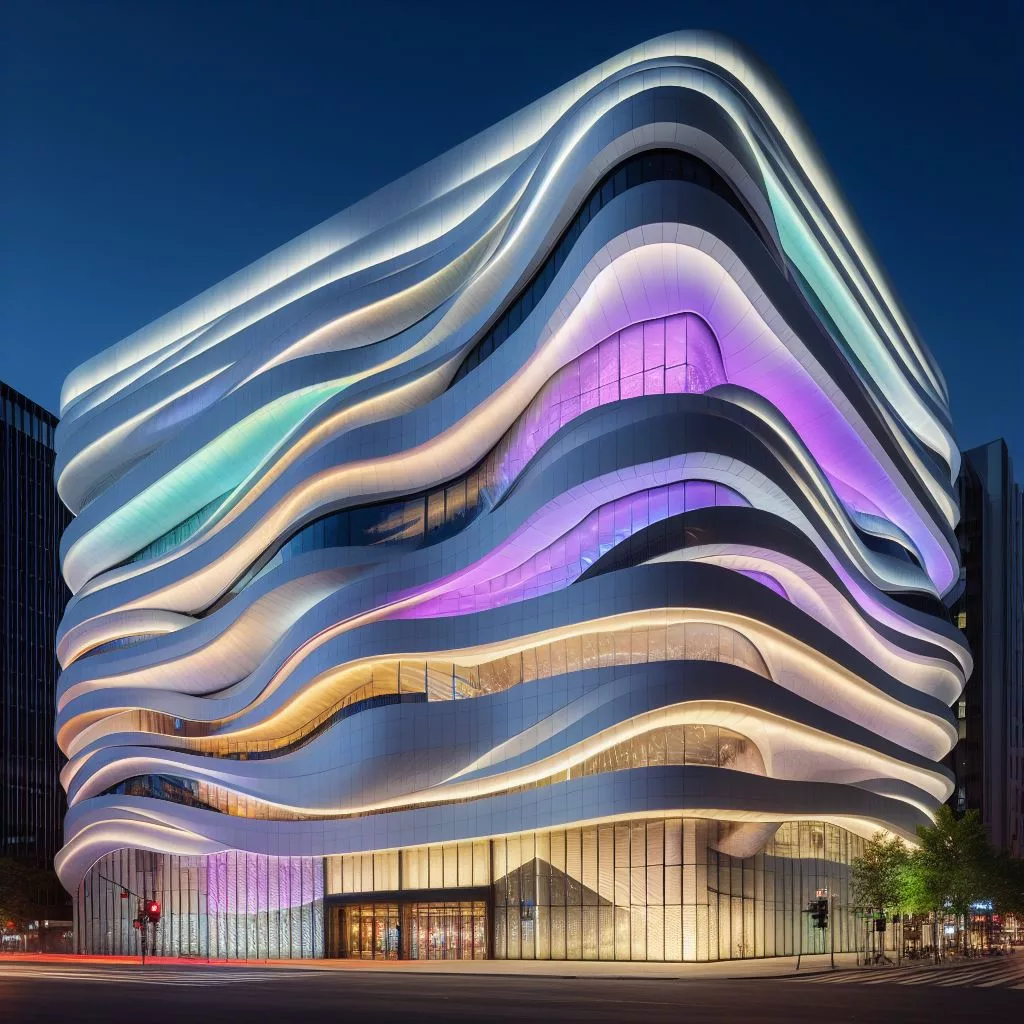
Functionality Over Ornamentation
In contrast to previous architectural styles that prioritized ornate decoration, modern architecture places a greater emphasis on functionality. Buildings are designed with the purpose of meeting the needs of their occupants efficiently and effectively.
This focus on functionality is evident in the clean lines and simplicity of modern buildings. Ornamental details are often minimized or eliminated altogether, allowing the form to follow function. The result is a visually streamlined aesthetic that prioritizes usability and practicality.
By prioritizing functionality over ornamentation, modern architecture seeks to create spaces that are not only visually appealing but also highly functional for their intended purposes. This approach aligns with the changing needs and lifestyles of people in the modern era.
The Elimination of Ornaments: A Prominent Theme in Modern Building Design
The elimination of ornaments is a defining characteristic of modern building design. Modern architects prioritize simplicity and minimalism over decorative elements, resulting in contemporary architecture that embraces clean lines and unadorned surfaces.
Gone are the days of ornate styles like Gothic Revival; instead, modernism focuses on sleek and streamlined designs. This shift in architectural style has given rise to a new wave of buildings that embody the principles of modern design.
One of the key features of modern architecture is its emphasis on open floor plans. Walls are minimized or eliminated altogether, creating fluid spaces that promote connectivity and flexibility. This design aesthetic allows for easy movement within the building while maximizing natural light and views.

Modern architects also experiment with new building materials to achieve their vision. From glass facades to steel structures, these innovative materials offer both durability and aesthetic appeal. By incorporating these materials into their designs, architects can create striking visual statements while maintaining structural integrity.
Moreover, modern architecture places great importance on functionality and efficiency. Every aspect of a building’s design is carefully considered to serve its purpose effectively. From energy-efficient systems to sustainable practices, modern buildings strive to minimize their environmental impact while providing optimal comfort for occupants.
Contemporary architecture also seeks inspiration from nature. Incorporating natural elements such as green roofs or living walls brings a sense of harmony between the built environment and the surrounding landscape. These biophilic design principles not only enhance the aesthetics but also contribute to improved well-being for those who inhabit these spaces.
Another notable aspect of modern building design is its adaptability to evolving needs. Architects consider future growth and changes when designing structures, ensuring they can be easily modified or expanded as required. This forward-thinking approach ensures longevity and relevance in an ever-changing world.

The Evolution of Modern Architecture
Modern architecture emerged as a response to societal changes and technological advancements, departing from the traditional architectural styles prevalent during its time. Architects like Le Corbusier and Frank Lloyd Wright played significant roles in shaping this new era of design.
Societal Changes and Technological Advancements
Modern architecture was born out of a desire to reflect the progress and culture of the 20th century. As society underwent rapid transformations, architects sought to create buildings that embodied these changes. They aimed to break away from the ornate and elaborate designs of the past, embracing simplicity, functionality, and efficiency instead.

Departure from Traditional Styles
Gothic revival architecture dominated the 19th century with its intricate detailing and pointed arches. However, modern architects rejected this style in favor of clean lines, geometric shapes, and open spaces. They believed that form should follow function, designing buildings that were practical for their intended purpose rather than simply decorative.
Influential Architects
Le Corbusier was one of the pioneers of modern architecture. He championed the use of concrete as a versatile material that allowed for innovative designs. His famous Villa Savoye is an excellent example of his principles at work: an elegant structure with clean lines and large windows that blur the boundaries between indoors and outdoors.
Frank Lloyd Wright also made significant contributions to modern architecture with his organic approach. Inspired by nature, he believed that buildings should harmonize with their surroundings. Fallingwater, his iconic masterpiece nestled amidst a forest landscape, perfectly exemplifies this philosophy.
Pushing Boundaries
As technology advanced further in the latter half of the 20th century, architects like Frank Gehry and Jean Nouvel pushed boundaries even further. Gehry’s Guggenheim Museum Bilbao showcases his signature style characterized by undulating forms created through computer-aided design (CAD) software.
Jean Nouvel’s works often incorporate cultural references and respond to the context of their surroundings. His design for the Louvre Abu Dhabi, for instance, features a massive dome inspired by traditional Arabic architecture and creates a play of light reminiscent of the region’s ancient souks.
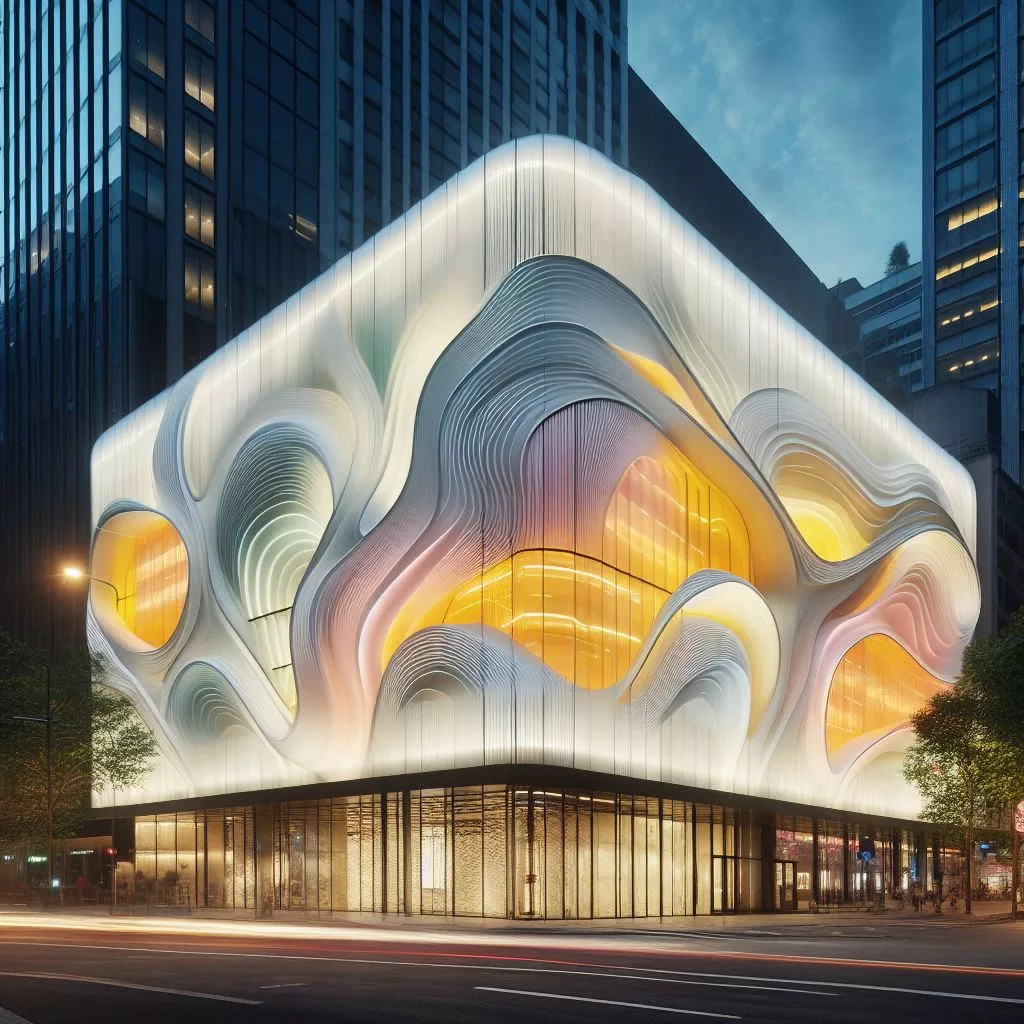
Shaping Modern Architecture
Modern architecture has shaped our cities and landscapes, leaving an indelible mark on history. Its departure from traditional styles, embrace of simplicity and functionality, and integration of new technologies have revolutionized the way we think about buildings.
Architects continue to push boundaries in the 21st century, exploring sustainable materials and designs that prioritize environmental consciousness. The evolution of modern architecture is ongoing, with each generation contributing its own unique perspective on how buildings can best serve society.
Distinguishing Modern and Contemporary Architecture
Modern architecture, which emerged from the late 19th to mid-20th century, is a distinct architectural style that reflects a specific period in history. On the other hand, contemporary architecture is an ongoing style that incorporates elements from various architectural styles, including modernism.
Historical Context and Period
Modern architecture refers to a specific era in history, characterized by significant advancements in technology, materials, and construction techniques. It was a response to the industrial revolution and aimed to break away from traditional architectural forms. Architects like Le Corbusier and Frank Lloyd Wright were pioneers of this movement, emphasizing simplicity, clean lines, and functionality.
Contemporary architecture, however, is not bound by a specific historical period. It represents the current trends and innovations in architecture. With advancements in technology and changing societal needs, contemporary architects have more freedom to experiment with different styles and materials.
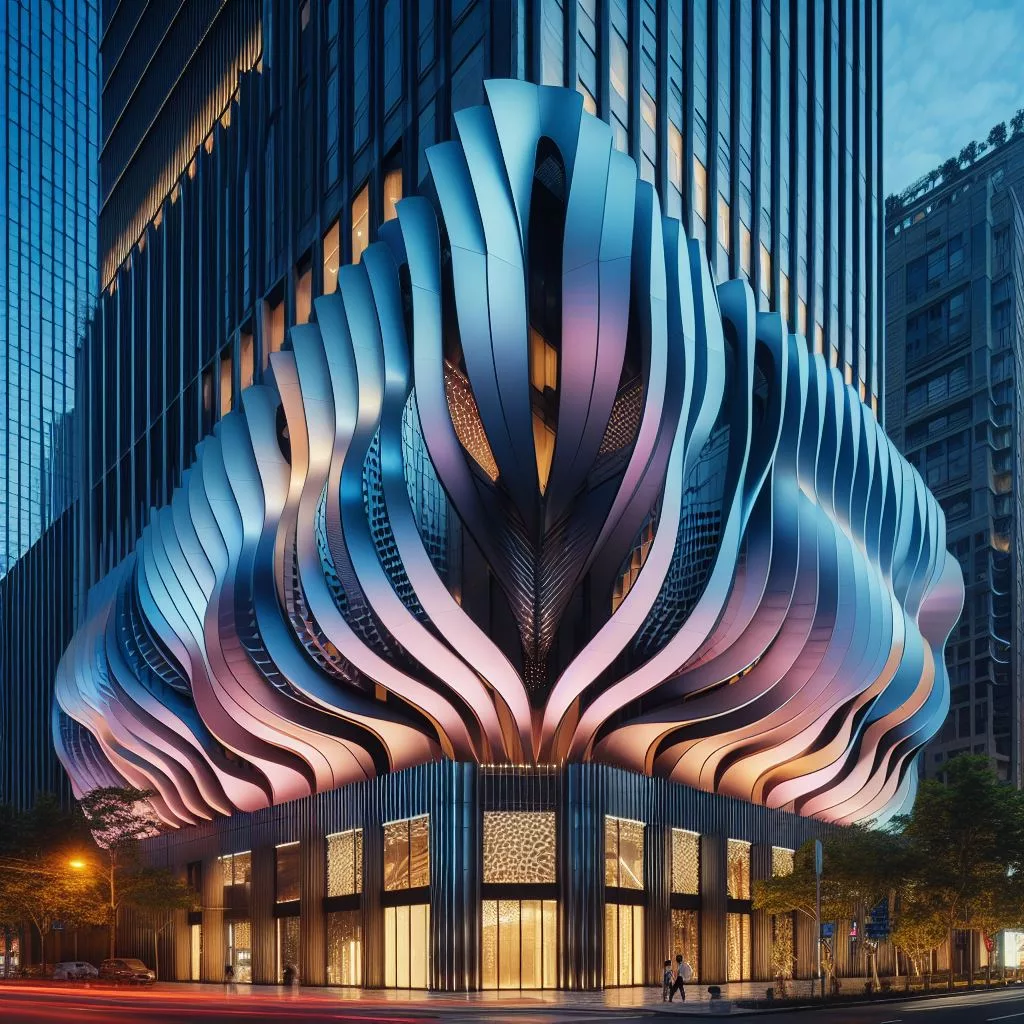
Incorporation of Styles
While modern architecture has its own distinct characteristics, contemporary architecture often incorporates elements from different architectural styles. This includes borrowing ideas from modernism itself. For example, contemporary buildings may feature clean lines and open floor plans inspired by modernist principles.
Contemporary architects also draw inspiration from other historical periods or cultural influences when designing buildings. This blending of styles allows for greater creativity and flexibility in creating unique structures that reflect the present time.
Functionality as Priority
Both modern and contemporary architecture prioritize functionality above all else. They aim to create spaces that are efficient, practical, and cater to the needs of the occupants.
In modern architecture, this emphasis on functionality was a response to societal changes brought about by industrialization. Buildings were designed with an understanding of how people lived and worked during that time period.
Contemporary architects continue this focus on functionality but adapt it to suit current lifestyles. They consider factors such as sustainability, energy efficiency, accessibility, and flexible use of space when designing buildings for today’s needs.

Examples of Modern and Contemporary Architecture
To better understand the differences between modern and contemporary architecture, let’s consider a few examples. The Farnsworth House, designed by Ludwig Mies van der Rohe in 1951, is an iconic example of modern architecture. It features a cantilevered roof, floor-to-ceiling glass walls, and an open floor plan that blurs the boundaries between indoor and outdoor spaces.
In contrast, the Burj Khalifa in Dubai represents contemporary architecture. Completed in 2010, it is the tallest building in the world and showcases cutting-edge design and engineering. Its sleek glass facade and innovative structural systems exemplify the forward-thinking approach of contemporary architects.
Key Ideologies in Modern Architectural Design
Modern architectural design is influenced by various ideologies that shape its principles and aesthetics. Let’s explore three key ideologies that have significantly impacted modern building design.
Functionalism
Functionalism is a design ideology that emphasizes practicality and efficiency in architectural design. It prioritizes the functionality of a space, ensuring that every element serves a purpose. In modern building design, functionalism focuses on creating spaces that are well-suited to their intended use.
Architects who follow functionalist principles carefully consider the needs of the occupants and aim to optimize the layout and organization of spaces. They strive to create buildings where form follows function, ensuring that every aspect of the design contributes to its overall purpose.
For example, in an office building designed with functionalism in mind, architects would prioritize factors such as natural light, acoustics, and ergonomic workspaces to enhance productivity and employee well-being.
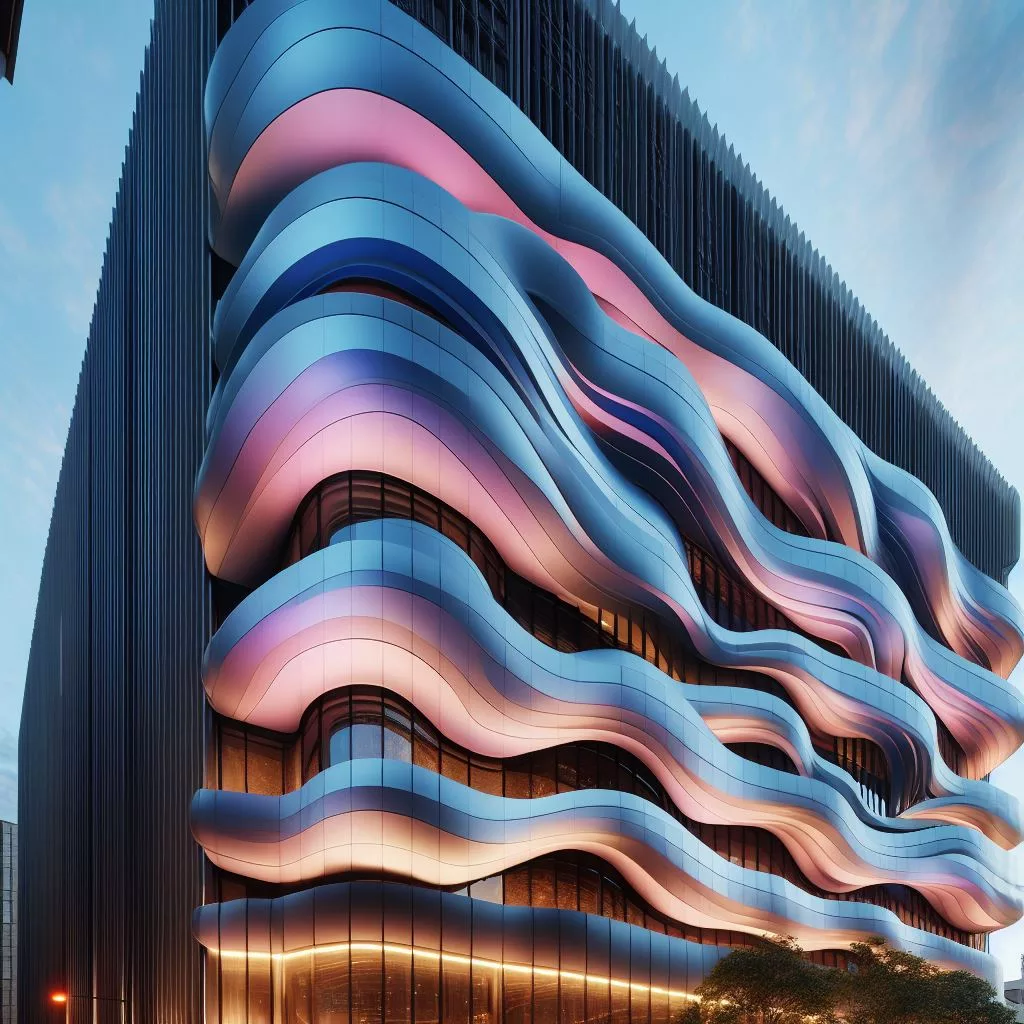
Minimalism
Minimalism is another key ideology in modern architectural design. It embraces simplicity by stripping away unnecessary ornamentation and focusing on clean lines and a minimalist aesthetic. This ideology aims to create spaces that feel uncluttered and serene.
Minimalist architecture often features open floor plans, neutral color palettes, and minimal decoration. The emphasis is on essential elements rather than excessive embellishments. By eliminating excess, minimalist design creates a sense of calmness and allows for better appreciation of the space itself.
Sustainable materials are often favored in minimalist architecture due to their natural textures and eco-friendly properties. This combination of simplicity and sustainability has made minimalism a popular choice for both residential and commercial buildings alike.
Sustainability
Sustainability has become increasingly important in modern architectural design due to growing environmental concerns. Architects now integrate eco-friendly practices into their designs to minimize the negative impact on the planet.
Sustainable architecture incorporates energy-efficient systems, renewable materials, water conservation techniques, and passive heating or cooling methods. By implementing these practices, architects can reduce a building’s carbon footprint and promote a healthier environment.

For instance, sustainable buildings may include features such as solar panels to generate electricity, rainwater harvesting systems for irrigation, or green roofs that improve insulation and reduce stormwater runoff.
In addition to the environmental benefits, sustainable design also prioritizes occupant well-being by creating healthier indoor environments with improved air quality and natural lighting.
By embracing functionalism, minimalism, and sustainability in modern architectural design, architects are able to create spaces that are not only aesthetically pleasing but also highly functional, environmentally friendly, and conducive to human well-being.
Iconic Examples Shaping the Architectural Landscape
Fallingwater: Organic Integration with Nature
Fallingwater, designed by Frank Lloyd Wright, is renowned for its seamless integration with the surrounding natural environment. Located in Pennsylvania, this iconic building exemplifies Wright’s philosophy of organic architecture. The house is built over a waterfall, with cantilevered terraces and balconies that extend out into the lush forest.
The use of natural materials such as stone and wood further enhances the harmony between the building and its surroundings. By incorporating large windows and open floor plans, Wright successfully brings nature inside, blurring the boundaries between indoors and outdoors. Fallingwater stands as a testament to the idea that buildings can coexist harmoniously with nature.

The Guggenheim Museum Bilbao: Innovative Use of Materials
Frank Gehry’s design for the Guggenheim Museum Bilbao revolutionized museum architecture worldwide. This iconic building in Spain showcases Gehry’s innovative use of materials and distinctive sculptural form. The museum’s exterior is clad in titanium panels that shimmer in different shades depending on the light, creating a visually striking effect.
The flowing lines and curves of the building’s structure defy traditional notions of rigid geometries, giving it an organic feel. Inside, visitors are greeted by vast open spaces flooded with natural light from skylights above. The unconventional layout challenges visitors’ perceptions as they navigate through interconnected galleries.
The Guggenheim Museum Bilbao has become a symbol of urban regeneration and cultural revitalization. Its unique design has attracted millions of visitors from around the world, making it an architectural landmark that continues to inspire future generations.
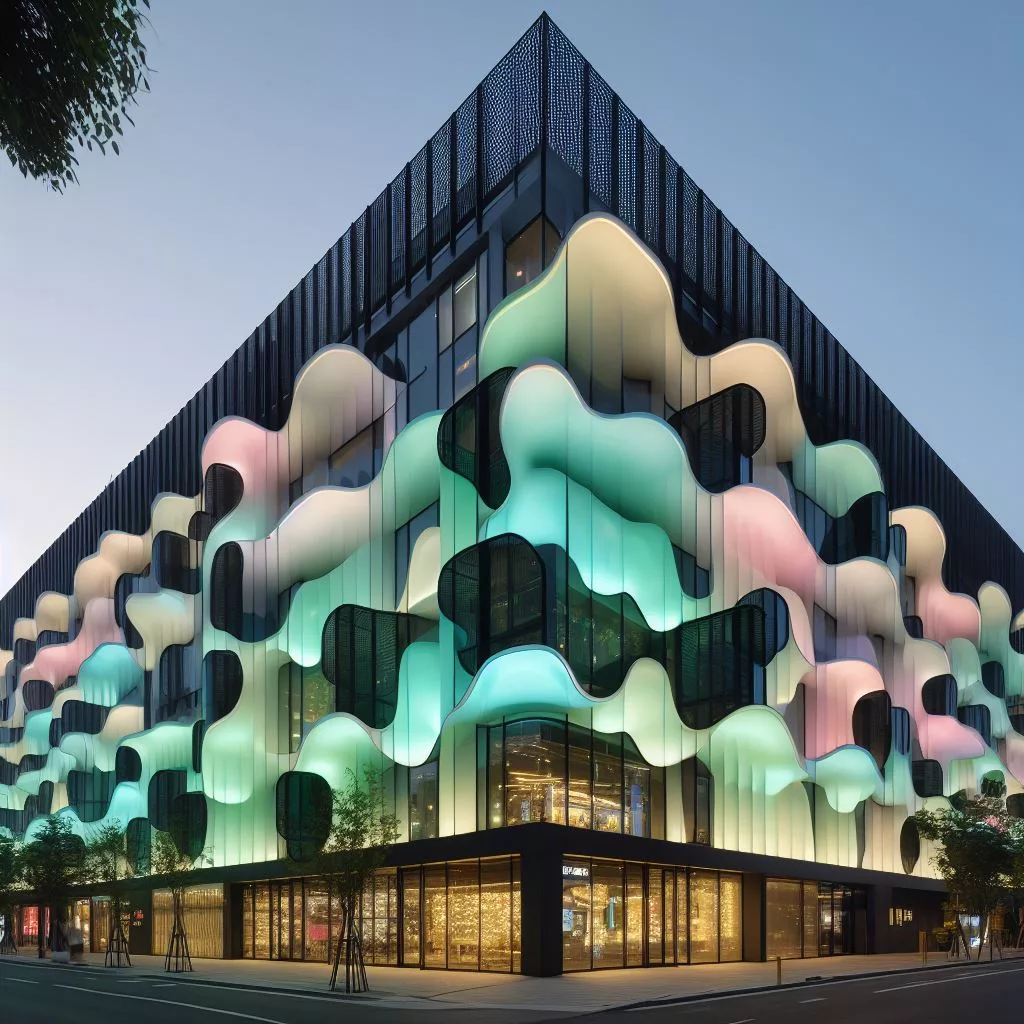
Sydney Opera House: Sculptural Modernist Architecture
Jørn Utzon’s Sydney Opera House is an internationally recognized icon that defines modernist architecture. Situated on Sydney Harbour in Australia, this masterpiece features a series of sail-like shells that appear to float above the water. The complex engineering required to bring Utzon’s vision to life is a testament to his innovative spirit.
The sculptural form of the opera house has become synonymous with the city of Sydney, attracting millions of visitors each year. Its iconic silhouette against the backdrop of the harbor has made it one of the most photographed buildings in the world.
Inside, the opera house houses multiple performance venues, including concert halls and theaters. The acoustics and design considerations ensure an exceptional experience for both performers and audiences alike. The Sydney Opera House stands as a testament to Utzon’s ability to create a building that not only serves its purpose but also captures the imagination and becomes an enduring symbol of a place.
Read more: Elevate Your Dreams: Tree House Inspiration to Ignite Your Imagination
Modern Architecture’s Impact on Daily Living
Open Floor Plans: Promoting Flexibility and Social Interaction
Modern architecture has revolutionized the way we live and work, with open floor plans being a prominent feature in contemporary building design. These layouts eliminate the barriers of traditional walls, creating a sense of spaciousness and promoting flexibility within homes or offices. By removing physical boundaries, open floor plans allow for seamless movement between different areas, encouraging social interaction among family members or colleagues.

Connection with Nature Through Large Windows and Natural Light
One of the key elements of modern building design is the incorporation of large windows that bring natural light into indoor spaces. These expansive windows not only enhance the aesthetic appeal but also establish a strong connection between interior and exterior environments. The abundant natural light creates a warm and inviting atmosphere while providing numerous health benefits such as boosting mood, increasing productivity, and reducing reliance on artificial lighting.
Efficient Use of Space: Compact Living in Urban Areas
In today’s fast-paced world where cities are becoming increasingly crowded, efficient use of space is crucial. Modern architecture addresses this challenge by maximizing every square inch to accommodate compact living in urban areas. From clever storage solutions to multifunctional furniture, innovative design strategies make it possible to create functional living spaces even in limited square footage. This allows individuals to enjoy all the amenities they need without sacrificing comfort or convenience.

Energy Efficiency and Sustainability: A Greener Way Forward
Modern building design places great emphasis on energy efficiency and sustainability. Architects incorporate various techniques such as advanced insulation systems, energy-efficient appliances, renewable energy sources like solar panels, and water-saving fixtures to reduce power consumption and minimize environmental impact. By adopting these sustainable practices, modern buildings contribute towards creating a greener world by conserving resources, reducing greenhouse gas emissions, and minimizing waste generation.
Enhancing Public Spaces: Creating Engaging Environments
Modern architecture extends beyond individual homes or offices; it also focuses on enhancing public spaces. Urban parks, plazas, and community centers are designed to be visually appealing, functional, and accessible to all. These well-designed public spaces foster a sense of community, provide opportunities for recreation and relaxation, and encourage social interaction among residents. By creating engaging environments that cater to diverse needs, modern architecture contributes to the overall well-being of individuals and communities.

Current Trends in Modern Architectural Design
Sustainable Design Practices
Sustainable design practices are gaining popularity in modern architectural design. These practices focus on reducing the negative impact on the environment and promoting energy efficiency. One such trend is the use of green roofs, which involve covering rooftops with vegetation to improve insulation, reduce stormwater runoff, and provide habitat for wildlife. Energy-efficient systems are being incorporated into buildings to minimize energy consumption and lower carbon emissions. This includes the use of solar panels, LED lighting, and smart thermostats that regulate temperature based on occupancy and time of day.
Adaptive Reuse of Existing Structures
Another growing trend in modern architectural design is the adaptive reuse of existing structures. Instead of demolishing old buildings, architects and designers are finding innovative ways to repurpose them. This approach helps reduce waste while preserving architectural heritage. For example, an old factory might be transformed into a trendy loft apartment complex or a former church could become a unique event space. By breathing new life into these structures, they contribute to sustainable development by minimizing construction waste and conserving resources.

Integration of Smart Technology
The integration of smart technology into buildings is revolutionizing modern architectural design. With advancements in technology, buildings can now be equipped with various intelligent systems that enhance functionality and energy management. For instance, automated lighting systems can adjust brightness levels based on natural light availability or occupancy sensors. Smart HVAC (Heating, Ventilation, and Air Conditioning) systems can optimize temperature control by learning occupants’ preferences and adjusting accordingly.
Moreover, building automation systems enable centralized control over various aspects such as lighting, security systems, and energy usage monitoring. This integration not only improves convenience but also promotes energy efficiency by enabling real-time monitoring and adjustment of resource consumption.
The Intersection of Color and Modernist Aesthetics
Bold color choices can have a profound impact on modern building design. By accentuating the clean lines and simplicity of modernist architecture, bold colors can add vibrancy and visual interest to the overall aesthetic. This deliberate use of color creates a striking contrast against the minimalist backdrop, drawing attention to the architectural elements and creating a unique visual experience.
Monochromatic color schemes are another popular choice in modern building design. These schemes involve using different shades and tones of a single color, creating a sense of harmony within the building. By utilizing variations of one hue, architects can achieve an elegant and cohesive look that complements the clean lines and geometric shapes commonly found in modernist architecture.

Contrasting colors play an essential role in highlighting specific architectural features or elements. When used strategically, contrasting colors can draw attention to focal points or specific areas of interest within a building’s design. For example, using a vibrant pop of color on an entrance door or window frames can create a captivating focal point that stands out against the surrounding neutral tones.
One prominent example where color intersects with modernist aesthetics is in The Louvre Abu Dhabi designed by Pritzker Prize-winning architect Jean Nouvel. Here, Nouvel employed intricate latticework patterns inspired by traditional Arabic motifs on the museum’s dome structure. The interplay between light and shadow created by these patterns is further enhanced by various hues projected through openings called “oculi.” This innovative use of color adds depth and dimension to the building’s exterior while maintaining its contemporary style.
Another notable project that exemplifies the intersection of color and modernist aesthetics is The Vessel at Hudson Yards in New York City. Designed by Heatherwick Studio in collaboration with landscape architecture firm Nelson Byrd Woltz, this interactive sculpture features an intricate network of staircases connected seamlessly to form an impressive geometric structure. The bronze-colored steel cladding not only adds a touch of warmth but also accentuates the building’s unique form and clean lines.
Celebrating Influential Movements in Modern Architecture
Bauhaus: Unity of Art, Craft, and Technology
The Bauhaus movement revolutionized modern building design by emphasizing the unity of art, craft, and technology in design education. Founded in Germany in 1919 by architect Walter Gropius, Bauhaus aimed to break down the barriers between fine arts and applied arts. It sought to create a new generation of designers who could integrate various disciplines seamlessly.
Bauhaus architects believed that form should follow function, meaning that the purpose of a building or object should dictate its design. They embraced simplicity and clean lines while incorporating industrial materials such as glass, steel, and concrete into their creations. This approach resulted in buildings that were both aesthetically pleasing and practical.
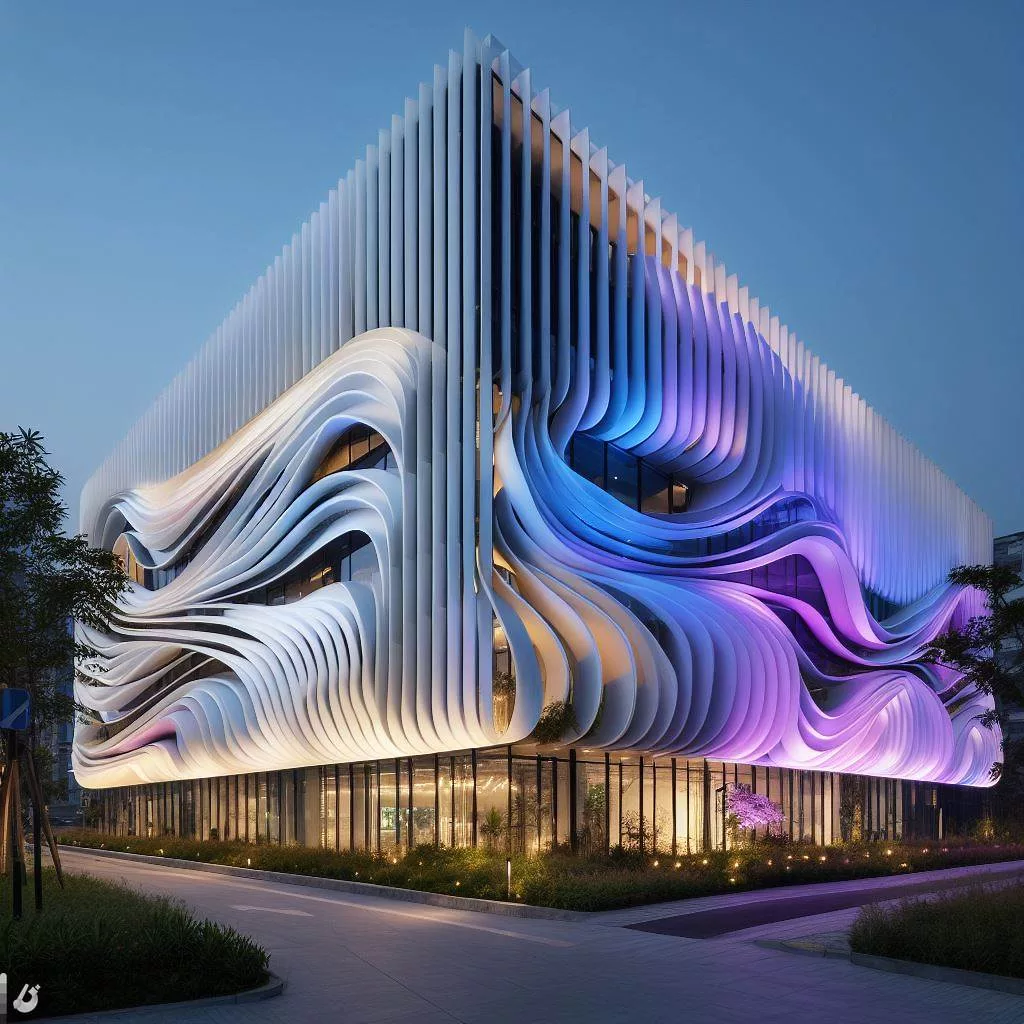
International Style: Embracing Functionalism and Simplicity
The International Style emerged during the early 20th century as a response to the rapid urbanization and technological advancements of the time. Architects like Le Corbusier, Ludwig Mies van der Rohe, and Walter Gropius played significant roles in shaping this influential movement.
The International Style prioritized functionalism and simplicity. Buildings designed in this style featured clean lines, open spaces, and large windows to maximize natural light. The use of industrial materials such as glass, steel, and concrete was prevalent. These structures showcased a sense of harmony between form and function.
Brutalism: Emphasizing Raw Concrete Aesthetics
Brutalism is characterized by its raw concrete aesthetics with an emphasis on massiveness. This architectural movement gained popularity from the 1950s to the mid-1970s. Architects such as Le Corbusier and Alison Smithson were known for their contributions to Brutalist architecture.
Buildings designed in the Brutalist style often featured exposed concrete surfaces with rough textures. The focus was on showcasing the material’s inherent qualities rather than concealing them. This resulted in structures that appeared solid and monumental, often evoking a sense of power and strength.
Examples of notable Brutalist buildings include the Elbphilharmonie concert hall in Hamburg, Germany, and the Royal Danish Library in Copenhagen, Denmark. These structures have become iconic landmarks known for their unique architectural expressions.
Conclusion on the Significance of Modern Building Design
Congratulations! You’ve now explored the fascinating world of modern building design. From the elimination of ornaments to the iconic examples that have shaped our architectural landscape, you’ve gained valuable insights into this influential field. By understanding key ideologies and current trends, you’ve uncovered how modern architecture impacts our daily lives.
As you reflect on what you’ve learned, consider how modern building design can inspire and transform your own spaces. Whether you’re renovating your home or dreaming up a new project, take inspiration from the principles of modern architecture. Embrace simplicity, functionality, and innovation in your designs. Let the intersection of color and modernist aesthetics guide your choices.
Now that you have a deeper appreciation for modern building design, go out there and create something amazing. Let your imagination soar as you embrace the power of architecture to shape our world. And remember, every space has the potential to be extraordinary—just like you.

